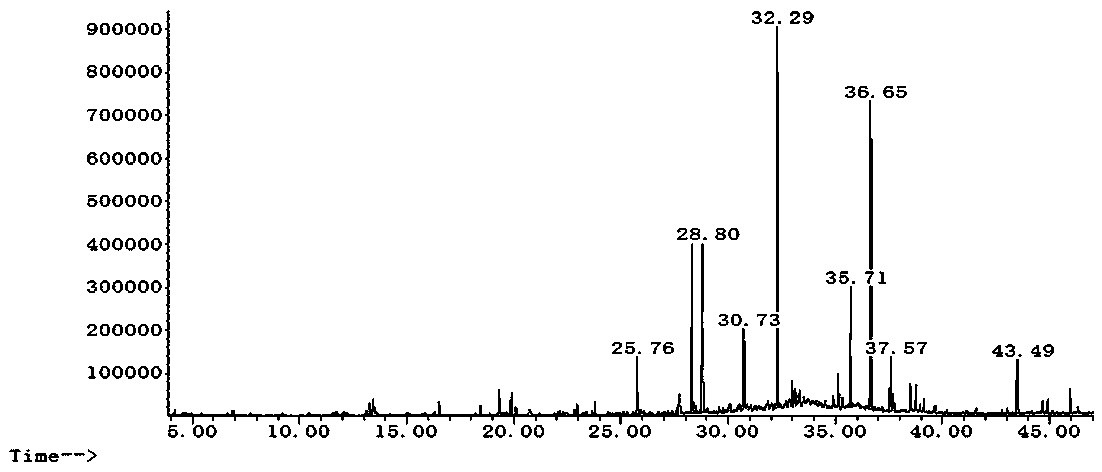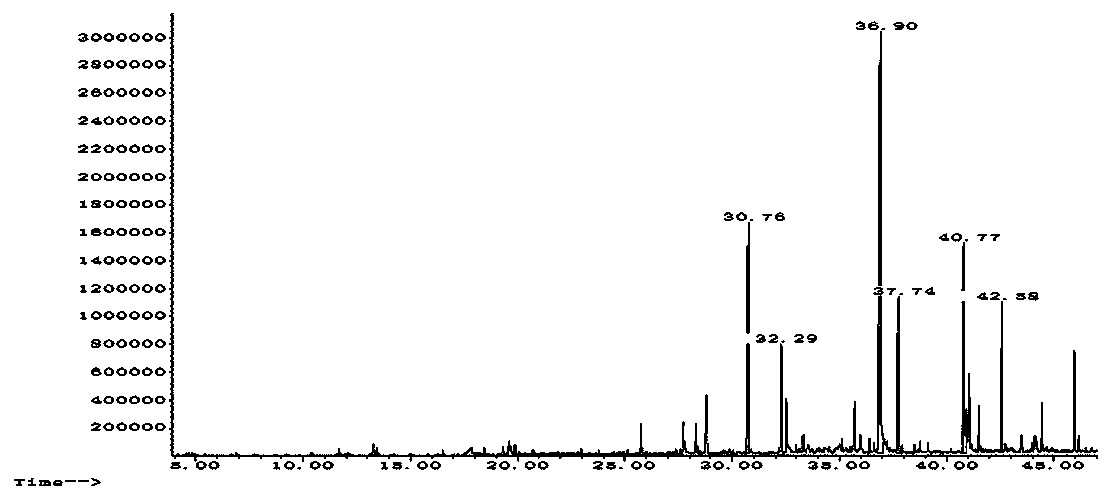Application of n-butyl stearate
A technology of butyl octadecanoate and plants, which is applied in the field of application of butyl octadecanoate
- Summary
- Abstract
- Description
- Claims
- Application Information
AI Technical Summary
Problems solved by technology
Method used
Image
Examples
Embodiment 1
[0038] Discovery of susceptible marker compounds
[0039] (1) Collection of volatile components from healthy and susceptible Chinese rose plants
[0040] The headspace dynamic absorption method was used to collect the volatile components of Chinese rose plants that were healthy and free of diseases and insect pests. The same method was used to collect the volatile components of Chinese rose plants infected with powdery mildew. The experiment was carried out in the greenhouse used in the actual production of Chinese rose cut flowers, with a temperature of 18-42 °C, 70-100% RH, and a photoperiod of about 14 h.
[0041]During the collection process, the inlet air flow rate is 800 ml / min, and the outlet flow rate is 500 ml / min. The excess air flows out through the inevitable air leakage port, so as to ensure the high pressure inside the collection bag and prevent the outside air from entering the collection system. The collection bag is a transparent oven bag, which is pretreated...
Embodiment 2
[0057] Influence of susceptible disease grade on the content of butyl octadecanoate
[0058] Example 1 It has been found that butyl octadecanoate is an important susceptibility marker compound, which can be used to indicate whether Chinese rose plants are infected with powdery mildew. Example 2 and Example 3 further verify this. If butyl octadecanoate is indeed a marker compound for susceptibility, its content should increase with the increase of the susceptibility level (in Example 2), and increase with the prolongation of the susceptibility time (in Example 3).
[0059] In rose greenhouses, the degree of susceptibility was graded according to the leaf area covered by powdery mildew. The area of 1 / 16 of all leaves on a branch is covered by powdery mildew as grade I; 1 / 8 covered by powdery mildew as grade II; 1 / 4 covered by powdery mildew as grade III; Level 0 was used as a control. The volatile components were collected and analyzed by GC-MS in the same manner as in Exam...
Embodiment 3
[0062] Effect of susceptible time on the content of butyl octadecanoate
[0063] Chinese rose branches with basically the same leaf number, plant height and stem diameter were selected, 3 of which were used as healthy controls, and the others were inoculated with powdery mildew. Volatile components were collected on days 4, 7, 10, 13, and 16 after inoculation, and the collection method and GC-MS identification method were the same as in Example 2. Each time point was repeated 3 times. The results are attached Figure 5 shown.
[0064] Overall, after the Chinese rose plants were inoculated with powdery mildew, the content of butyl octadecanoate increased with the prolongation of the infection time. In healthy controls, butyl octadecanoate was not found in all three repetitions. In combination with the results of Examples 1-3, it can be confirmed that butyl octadecanoate can be used as a disease-sensitivity marker compound. If the presence of this compound is detected, it c...
PUM
 Login to View More
Login to View More Abstract
Description
Claims
Application Information
 Login to View More
Login to View More - R&D Engineer
- R&D Manager
- IP Professional
- Industry Leading Data Capabilities
- Powerful AI technology
- Patent DNA Extraction
Browse by: Latest US Patents, China's latest patents, Technical Efficacy Thesaurus, Application Domain, Technology Topic, Popular Technical Reports.
© 2024 PatSnap. All rights reserved.Legal|Privacy policy|Modern Slavery Act Transparency Statement|Sitemap|About US| Contact US: help@patsnap.com










